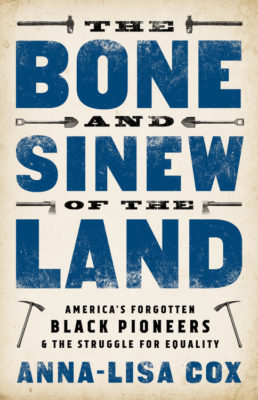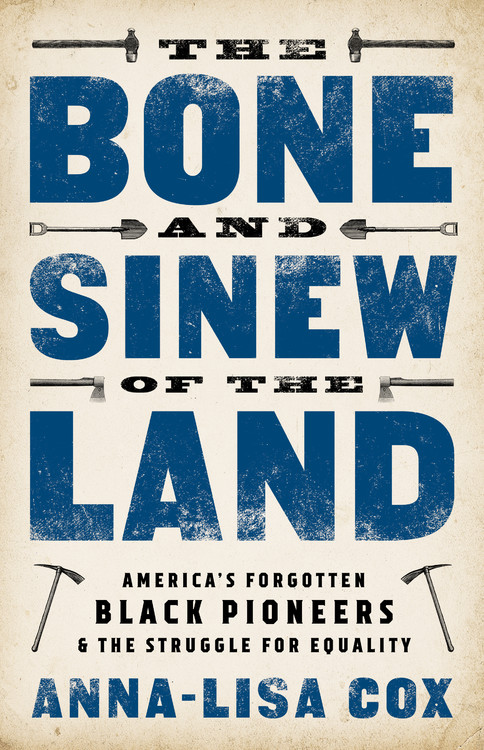When it so happens — more regularly now than before but never yet regular enough — that a cheap zinc or bronze cast of some semi-famous slaver is yanked from its pedestal in the middle of a city night, or when a suburban school board in broad daylight votes to no longer compel students to adorn their bodies with the name and imagery of a particular child trafficker, invariably there rises the cry:
“You’re erasing history! You’re censoring our Confederate past! You’re rewriting collective memory to sanitize it!”
This, of course, is worse than nonsense and akin to defending the maintenance of NAMBLA-installed plaques to Jerry Sandusky.
It should be regarded as such whether it’s an argument being made by angry, open bigots in Facebook comment sections or under the auspices of the National Review.
But some worthy portions of our history have indeed been buried, erased, and minimized. Harvard’s Anna-Lisa Cox’s latest book The Bone and Sinew of the Land is an example of what it actually looks like when that sort of history is excavated for a popular audience, and what a positive effect that can have.

Now, I knew going in I was reading a book about “America’s Forgotten Black Pioneers & the Struggle for Equality” but I was blindsided when that book wasn’t set in the West during Reconstruction but in the Old Northwest and later states between the 1787 and 1860.
Cox puts it into scale like this: more than 63,000 black Americans lived in those territories in 1863, enough to qualify for their own state if they were all in one place. They were the largest population of free African-descended people outside of Haiti.
Standard public school education tends to teach history as fundamentally progressive, including during Black History Month.
But Cox details how conditions worsened for black Americans in those territories and states over time, from the promise that area would be entirely free of slavery and assumption any male who owned at least fifty acres could vote regardless of race to the regular anti-black pogroms in cities like Cincinnati and proto-Black Codes making it impossible for black people to give testimony against whites in court.
This is all compelling enough on its own in broad strokes, but Cox also did research in-depth on particular people and families affected by new developments, highlighting the personal stakes for people involved. Ta-Nahesi Coates’ “The Case for Reparations” intentionally leaves aside the harm caused by slavery directly, but the average enslaved man could be worth $150,000 in today’s money as property. Enslaved people represented up to half of all Southern wealth.
Yet prior to the Civil War, an enslaved person’s own value was not only of no use to them but a debt to overcome. They had to literally pay for their own flesh to be considered free, typically at exorbitant rates and sometimes their slaver would still attempt to sell them away after getting the money.
They had to pay to get their family members out of slave society, risking legal re-enslavement if they remained longer than six months.
After surviving brutal conditions like picking cotton in the deep South or the Salt Springs of Illinois and achieving their freedom, black Americans still had to survive on their homesteading plot of land with all the typical challenges of removing boulders and plowing, or make do in a city where any poverty was proof they weren’t fit to be free and any sign of prosperity incensed whites to come burn their part of town.
Attacking free black people with artillery and bombs in Cincinnati in 1841 was an act repeated later in Tulsa, Oklahoma in 1921, the MOVE bombing in Philadelphia in 1985, the militarized police aggression in Ferguson, Mo. in 2014, gassing people in their own backyards.
The story Cox tells culminates in the heroic stand of the Lyles family in 1857 against a white mob, led by the local law enforcement who came to try to lynch the prosperous black family in their home after the family had attempted to recover stolen hogs from white rustlers targeting them.
The Lyles defended themselves in a bloody attack but were forced to move away. However, they refused to sell their land and leased it to some white allies instead, moving back after the Civil War and founding Lyles Station.
For all this stacked against them, there were hundreds of free, black American families who achieved the American dream of owning at least two hundred acres of property, and Union recruiters knew where to go to look for black enlistees during the Civil War. This is the story Cox tells.
The book’s title refers to a resolution from an 1843 convention of black Michiganders: “Whereas agriculture is the bone and sinew of our country: Therefore be it resolved, that we recommend it to our people as best calculated to promote their rise and progress in this State.”
Most of their white neighbors resolved to do everything possible to prevent that.
The game is crooked, and it always has been, but it’s the only game in town, and to understand the present, we need to understand the past instead of forgetting it or accepting hateful revisionist history as truth.
Cox’s book is a great step in that direction.

